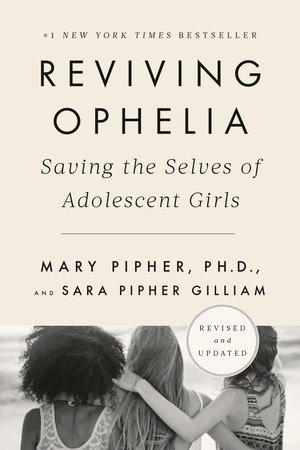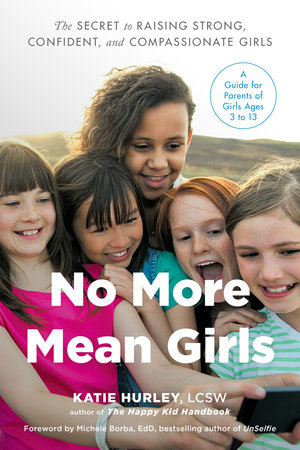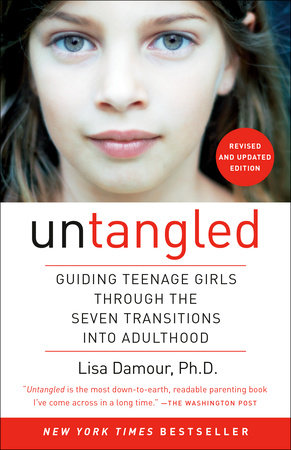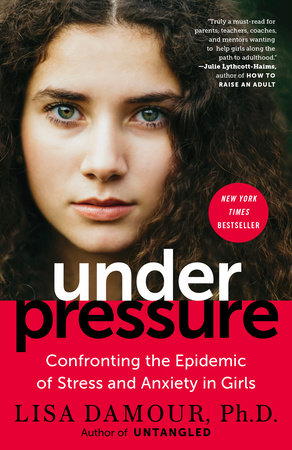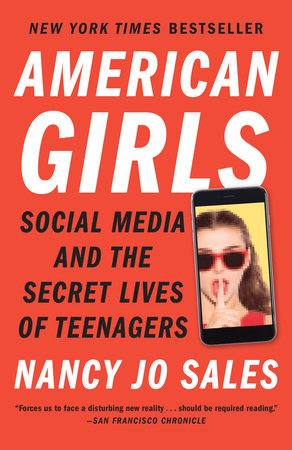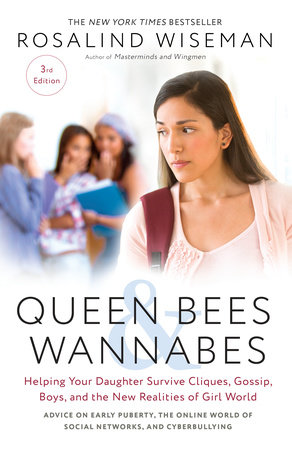6 Modern Books To Help Parents Raising Teen Girls
by Laura Lambert
I’m currently the mother of a middle-schooler deep in puberty — and I really thought I was prepared. I can totally handle talking about periods and pubic hair, I thought. I got this, I thought.
Then I started reading.
A spate of recent books tackle the topic of girls as they grow, just like that, into little women. I expected hormones and eye-rolls, frenemies and first crushes — just not in the way that smartphones and social media have changed everything. It’s been a crash course in all the things I didn’t realize I should be freaking out about.
These books offer both a cheat sheet of what I’ve learned and a preview of what us parents of girls might be in for.
-
Reviving Ophelia 25th Anniversary Edition
Available from:When Reviving Ophelia was first published, in 1994, I was just barely out of adolescence myself – and more or less the same age as Dr. Mary Pipher’s daughter, Sara. The book immediately changed the conversation about teen girls, what they endured and what parents could do about it. (As Dr. Pipher points out, researchers weren’t really paying attention to teen girls, at the time.) And it was ubiquitous – I used it as part of my dissertation in college.
In the 25 years since, plenty has changed. The bogeymen of the 90s – drugs, sex, alcohol, and partying – have given way to more slippery ills — like anxiety, depression, loneliness, and suicide — which are all, of course, tangled up in smartphones and social media and the new technological age we live in.
So, it’s no surprise that this 25th anniversary edition of Reviving Ophelia has emerged with different stories – not from Pipher’s therapy practice this time, but from new interviews – as well as a whole new chapter on anxiety.
Still, as Genevieve Valentine, writing for NPR, puts it: “This is at heart the same book it ever was: earnestly concerned about the difficulties of teen girlhood, filled with stories of girls who overcame those difficulties. Its advice is aimed at teens and parents who want reassurance that their problems are serious, their problems are familiar, and — crucially — that their problems are ultimately solvable.”
Also available from: -
No More Mean Girls
Available from:No More Mean Girls is an indispensable guide for the parents of slightly younger girls —preschool to preteen. And that’s because, as Hurley points out, “mean girl” culture starts younger and younger these days. Blame the third graders who are already on social media.
As almost every review will attest, the real key with this book is the concrete, practical advice – each chapter has a “Parent-Teacher Conference,” which reinforces specific concepts for the adult, as well as a “Girls Can” section with activities you can do together. It’s a great resource not just for parents, but also educators, Girl Scout troop leaders, and anyone responsible for helping grow girls who are the opposite of mean.
Also available from: -
Untangled
Available from:I’d shared countless Lisa Damour columns from the New York Times before I put two and two together, so it’s no wonder this book spoke to me. Damour is an author, psychologist, and champion of normalizing the “abnormal” behavior of teen girls.
The title promises a path through the wilderness of adolescence, breaking the teen years into rational developmental stages, from “Parting with Childhood,” through “Contending with Adult Authority,” and “Entering the Romantic World,” using real stories, real mothers, and real teens with real concerns to illustrate her point.
The schizoid behavior your teen is exhibiting? Chances are it’s normal, natural, and even necessary to the journey of growing up and out of your house. And just in case it’s not, she includes a “when to worry” section at the end of each stage.
The New York Times bestseller is written in the spirit that anxiety isn’t a great position from which to parent — and the tips are down-to-earth, like this indispensable nugget: “Girls can listen and roll their eyes at the same time.”
Also available from: -
Under Pressure
Available from:Damour’s most recent book – also a bestseller – goes deep into one of the most prevailing issues of the day: stress and anxiety. And girls, in particular, are feeling the effects – one study found that stress and anxiety has spiked 55% for girls, while staying basically the same for boys.
One of Damour’s first orders of business is to dispel the notion that stress and anxiety are completely bad. “In fact, you can’t thrive without them,” she writes. Stress is where we learn and grow, and how we avoid danger. But – as parents and girls both know – it rarely stops there.
In Under Pressure, Damour outlines the various stressors girls face in different contexts – at home, among girls, among boys, at school, and in the culture at large, and offers practical strategies for helping a girl manage. One such tip: using “That stinks” to validate a girl’s feelings, and then asking “How do you want to handle this?” to empower her to solve her own problems. That’s one I keep in my back pocket.
Also available from: -
American Girls
Available from:Nancy Jo Sales is the seasoned Vanity Fair writer behind the 2010 story about the infamous teen celebrity burglary gang the “Bling Ring” (which became a movie of the same name) and a much-debated piece from 2015, “Tinder and the Dawn of the ‘Dating Apocalypse,’” both of which inform the tenor and POV of this book — pegged as “a disturbing portrait of the end of childhood as we know it.” Teens and technology make for an alarming subject matter.
Right now, my 11-year-old is texting and searching YouTube for Carpool Karaoke and I Bet You Will Laugh clips. I’m still ever-so-slightly in the game. But, per American Girls, not for long.
For this book, Sales talked to more than 200 girls, aged 13 to 19, across 10 states. Social media is central to their lives, which is not news. What is news — to me, at least — is the intensity of the pressure to post #hot #pornstar images, all to get the likes that are a sign of social success. New to me as well is the wave of boys blackmailing girls for “noodz” (nude photos).
Aside from a broader critique of society, technology, online porn — or pinning our hopes on feminism — the book has little in the way of solutions. But that’s not the point. Here, the narratives give you a visceral sense of what our girls may face in the years to come, so we’re not totally shocked.
Also available from: -
Queen Bees and Wannabes, 3rd Edition
Available from:Like Reviving Ophelia, Queen Bees and Wannabes, first published in 2002, has been updated to include all that the Internet, texting, and social media hath wrought. And it’s still worth reading. (Although, to be fair, just three years since publication, some things already feel out of date – i.e. my 11-year-old wants the House Party app, not a Myspace account). There’s the same cast of characters – the Queen Bee, of course, but also the Sidekick, the Messenger, the Banker, the Target, and others. As many readers will admit, it can be painful to reimagine your own junior high and high school experiences through Wiseman’s lens – was I a Floater? A Torn Bystander? Could I have been a Queen Bee that one year? (Hence, a “Check Your Baggage” section to help disentangle your daughter’s traumatizing tween and teen years from your own.) But it’s still a powerful way to organize all the roles and conflicts of Girl World.
The best part? It was the basis of Tina Fey’s screenplay of Mean Girls.
Also available from:

